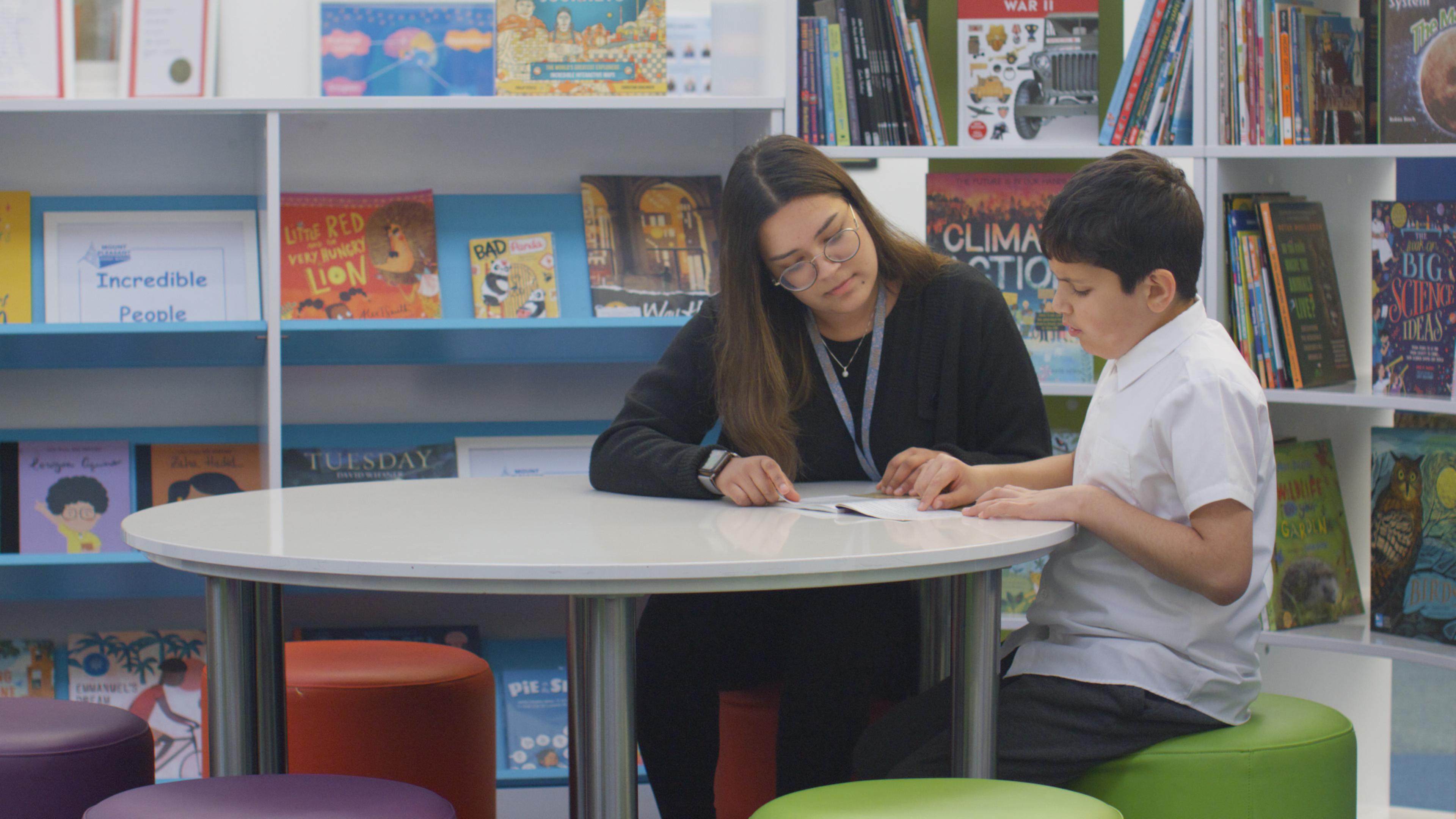Multilingualism in the classroom and SLT provision

The first part of this article focuses on the UK school system and SLT service delivery. If you work outside the UK, you can compare these facts and figures with your own context and share your thoughts in the discussion below.
The current context in UK schools
How many children in UK schools are multilingual?
Nearly 20% of children (around 2.5 million) in schools in the UK are multilingual, with more than 360 languages spoken1. National statistics collected across England for the academic year 2021/22 indicate that 21% of children attending primary school (4-11 years) and 18% of young people attending secondary school (11-18 years) have a first language that is different to English2.
What is the education provision for multilingual children in the UK?
Despite the large numbers of multilingual children in the UK, there is generally limited provision for their support. It’s usually down to each school and support that is provided is dependent on decisions made at a local level. In addition, many multilingual children don’t have the opportunity to use their heritage languages at school3.
The educational system differs across the nations of the UK. In England, the curriculum is delivered in the societal language of English, with little guidance or training for teachers on providing teaching for multilingual learners4,5. In Wales, Scotland and Northern Ireland, the governments support teaching in Welsh, Gaelic, Scots and Irish as well as English6,7. Professional standards for teaching and leadership in Wales also include continual development of Welsh language skills and promotion of Welsh culture and language7.
The British Council recognises that work is needed to capitalise on the “rich tapestry of languages spoken and taught in our schools” 8 and there is research to suggest that there are advantages of multilingualism in terms of academic success and communication skills if children and young people are given the opportunity to develop all of their languages9. Research by the University of Reading into the school experiences of Polish children learning English in primary schools found that some teachers were using research-informed practices for teaching multilingual children10. For example, they were ensuring that their teaching was talk-rich by intentionally focusing on the language-related demands of the lesson such as the introduction of new vocabulary or grammatical features.
Opportunities for supporting multilingual children
We know from our work with teachers that it’s a challenge to differentiate between language learning needs and language development needs in their multilingual children. For example, where a child seems to be taking a long time to speak aloud in class, it can be difficult to discern if they simply need more time to learn English, or they are very shy, or if they have a developmental language disorder that also presents in their heritage language. So we’ll now explore some ways in which SLTs and teachers can work together in making sure that support is targeted appropriately. We understand that not all practitioners will be working actively with SLTs, but this advice is aimed at supporting teachers with identifying when they need to call on the expertise of an SLT.
How does speech and language therapy work in school settings in the UK?
Speech and language therapists (SLTs) work with children with speech, language and communication needs (SLCN), their families and educational professionals, to develop personalised strategies to enable them to engage in their education and achieve their communicative and education potential.
SLTs also provide training to enable teachers to identify and support SLCN in the classroom11. They can provide support in schools at three different levels (or tiers)12:
- Supporting a whole-school approach to ensure communication opportunities for all children.
- Targeted support for children with speech, language and communication needs.
- Specialist individualised intervention for children with severe and complex communication needs.
How can SLTs best support multilingual children?
Being multilingual is not a risk factor for SLCN but, as is the case for monolingual children, some multilingual children will need speech and language therapy support to communicate and participate effectively in school.
Best practice recommendations for SLTs working with multilingual children in the UK state that assessment and intervention must be carried out in all languages, through the use of professional interpreters13. Assessment in all languages is crucial to differentiating diversity from a disorder. A full and detailed picture of language exposure, quality, quantity and age of acquisition of each language, as well as a good understanding of multilingual language acquisition is important to ensure that assessment results are interpreted accurately14. Research suggests that interventions that are effective in improving language outcomes in the societal language are not associated with improvements in the child’s heritage language15. An important part of the SLT’s role is to educate families on the need to maintain heritage language. This helps to maximise language and social outcomes for children14.
Challenges in delivering the best support for multilingual children
There are ongoing challenges for SLTs in delivering best practice:
- Children and young people with EAL are at risk of both over-identification (when their English language skills are not at the level of their peers because they are still acquiring it as a new language) and under-identification (when their language difficulties are assumed to be because of their multilingualism)16.
- A child or young person with EAL who has Developmental Language Disorder will present with difficulties in both (or all) of their languages. Diagnosis by a speech and language therapist therefore requires assessment in their home language as well as in English16.
- Resource limitations can make access to interpreters and availability of information and assessments in different languages challenging14.
- Work beyond the UK has identified additional factors that may impact speech and language therapy practice, such as implicit bias towards certain multilingual populations17, and lack of training in the assessment and management of multilingual children14.
Working together: teachers and SLTs
The roles of teachers and SLTs in supporting children and young people with SLCN are different. For SLTs, teachers and school staff can often provide essential background information about heritage languages and cultures experienced by children before they are assessed for SLCN. School staff that speak particular heritage languages are a valuable resource in supporting the delivery of intervention in heritage language at school.
These points, and others that will come up as the course progresses, show how collaborative working with teachers is essential in meeting the needs of multilingual children18.
Discuss
Why do you think it is important for teachers and SLTs to work together to support multilingual children?
Your profile of a child
Now make some additions to your profile by answering question 3. What is your child’s school environment like? Are many different languages spoken or only a few? How does the school support multilingual children? Does the child and/or school also access support from a speech and language therapist?
References
- Department for Education (2021). School pupils and their characteristics. Retrieved 04.10.22 from https://www.gov.uk/government/statistics/schools-pupils-and-their-characteristics-january-2021
- Department for Education (2022). School pupils and their characteristics. Retrieved 04.10.22 from https://explore-education-statistics.service.gov.uk/find-statistics/school-pupils-and-their-characteristics_
- Bailey, E., Marsden, E. (2017). Hundreds of language are spoken in the UK, but his isn’t always reflected in the classroom. The Conversation, August 2017.
- Flynn, N., Curdt-Christiansen, X.L. (2018). Intentions versus enactment: Making sense of policy and practice for teaching English as an additional language. Language and Education, 32, 410-427.
- Viesca, K.M., Teeman, A., Alisaari, J., Ennser-Kananen, J., Flynn, N., Hammer, S., Perumal, R., Routarinne, S. (2022) Quality content teaching for multilingual students: An international examination of excellence in instructional practices in four countries. Teaching and Teacher Education, 113, 103649
- Scottish Government (2017). The Scottish Government Gaelic Language Plan 2016-2021.
- Welsh Government (2017). Professional standards for further education teachers and work-based learning practitioners in Wales.
- British Council (2022). Language Trends 2022: language teaching in primary and secondary schools in England page 21.
- Evans, M. (2018) Advantages of Multilingualism: What is the Impact on Schooling? Cambridge University Press.
- Flynn, N. (2019). Teachers and Polish children: Capturing changes in the linguistic field. British Journal of Sociology of Education, 40 (1), 65-82.
- RCSLT & NAHT (2020) Guidance for education settings on commissioning (buying in) speech and language therapy services and training.
- Ebbels, S.H., McCartney, E., Slonims, V., Dockrell, J.E., Norbury, C.F (2019). Evidence-based pathways to intervention for children with language disorders. Int J Lang Commun Disord, 54(1):3-19.
- RCSLT & NAHT (2020) Guidance for education settings on commissioning (buying in) speech and language therapy services and training.
- Newbury, J., Bartoszewicz Poole, A., Theys, C. (2021). Current practices of New Zealand speech-language pathologists working with multilingual children. International Journal of Speech-Language Pathology, 22(5), 571-582.
- Restrepo, M-A., Morgan, G.P., Thompson, M.S. (2013). The Efficacy of a Vocabulary Intervention for Dual-Language Learners With Language Impairment. Journal of Speech, Language and Hearing Research, 56, 748-765.
- I CAN’s Developmental Language Disorder: A guide for every teacher on supporting children and young people with Developmental Language Disorder (DLD) in mainstream schools from the DLD Advisory Group.
- Nelson, M., Wilson, L. (2021). Implicit bias and multilingual assessment in school-based speech-language pathologists. Perspectives of the ASHA Special Interest Groups, 6, 1690-1704.
- Gallagher, A. L., Murphy, C. A., Conway, P. F. & Perry, A., 2019. Engaging multiple stakeholders to improve speech and language therapy in schools: an appreciative inquiry-based study. BMC Health Services Research, 19, 226.
Share this
Understanding Multilingual Children's Language Development

Understanding Multilingual Children's Language Development


Reach your personal and professional goals
Unlock access to hundreds of expert online courses and degrees from top universities and educators to gain accredited qualifications and professional CV-building certificates.
Join over 18 million learners to launch, switch or build upon your career, all at your own pace, across a wide range of topic areas.
Register to receive updates
-
Create an account to receive our newsletter, course recommendations and promotions.
Register for free







